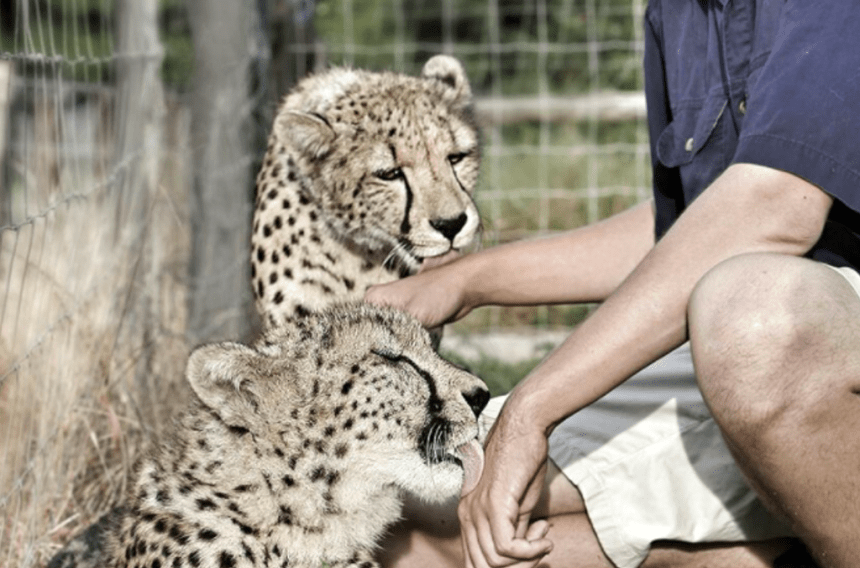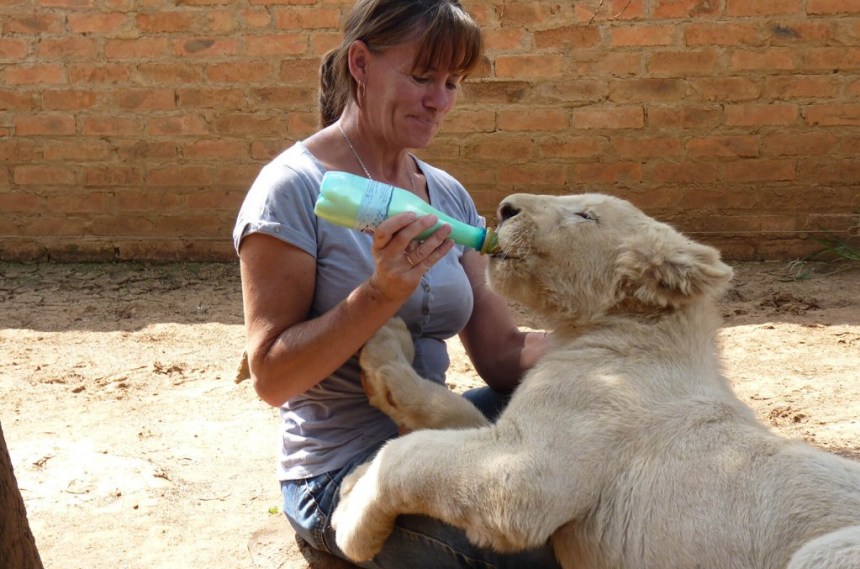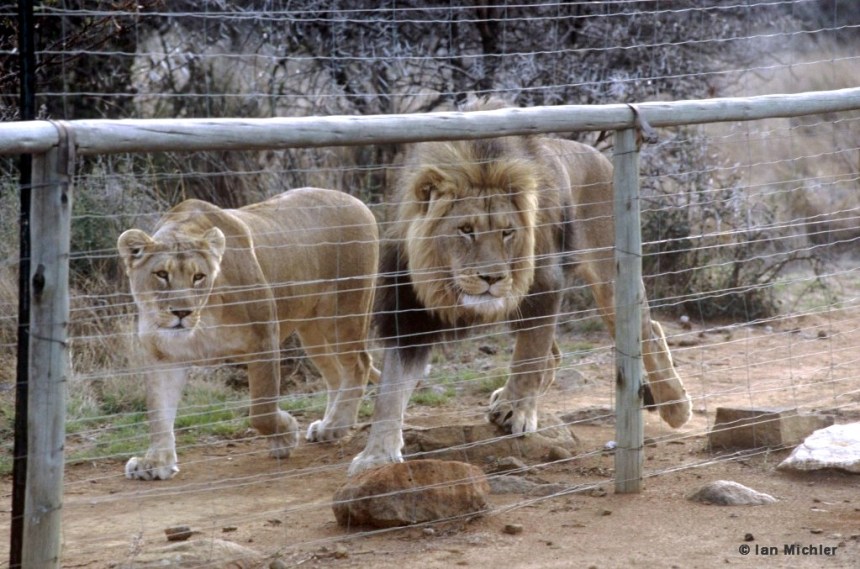Debunking the many myths of lion cub petting
Last week, big cat petting facilities were once again in the news for all the wrong reasons, with a cheetah attacking a teen from New Zealand at Emdoneni Safari Park in KZN. *
 In that same week, Brent Lindeque contacted me and shared his story. He recently visited a lion facility with overseas friends, happily petted a lion and posted the proof on social media. Needless to say, it created a minor storm.
In that same week, Brent Lindeque contacted me and shared his story. He recently visited a lion facility with overseas friends, happily petted a lion and posted the proof on social media. Needless to say, it created a minor storm.
Brent, as with so many others, was innocently but sadly ill-informed about the implications of big cat petting, an activity that initially seems so harmless. An activity, however, that is highly unethical and has major ramifications for the animals involved. He acknowledges that his choice at the time was far from ideal.
However, it is not the fact that we make mistakes in life, as we all do at some point, what matters is what we do with the learning experience. Brent wants to turn his error into a positive by raising awareness of the issues of lion cub petting in South Africa among the Good Things Guy readers.
He asked me to give you the facts. So, let’s debunk some myths.
Myth 1: Big cats used for petting and walking activities are rescued animals.
False. A few may be injured or orphaned big cats that could not be returned to the wild, but the vast majority of these animals come from the 200+ breeding facilities in South Africa that house collectively an estimated 6,000-8,000 captive bred predators. About 7,000 are lions and the remainder are cheetah, leopard and even tigers.
Myth 2: The hand-reared cubs are orphaned.
False. Most lion cubs born on these breeding farms are actively removed from their mother by the staff, sometimes within hours of birth.
Removing the cubs from a healthy mother and bottle feeding them, does not only habituate the cubs, but also encourages the females to breed again more quickly. A captive lioness can therefore produce as many as 2-3 litters per year, whereas in the wild she would only have about one litter every three years.
The hand rearing often involves paying visitors like you, or volunteers from other parts of the world, who pay exorbitant amounts of money to the facilities believing they support conservation through lion reintroduction programmes.

Myth 3: The big cats used for petting and walking are domesticated.
False. These lions and cheetahs are wild cats and are not domesticated. The process of domestication involves selecting specific characteristics you want in an animal and breeding with the individuals that display these features. This process can take many generations and even involves genetic changes over time.
Captive big cats are merely habituated to humans through hand rearing. Further conditioning is instilled through hands-on activities, like cub petting and walking that also generates further income for the farm/facility.
However, as we saw again this week, the behaviour of these habituated big cats remains unpredictable.

Myth 4: Hands-on big cat encounters support conservation and these animals are ultimately reintroduced into the wild.
False. Once the habituated lions have matured and are too dangerous to serve as tourist or volunteer props, they are offered for canned trophy hunting on their own farm or sold to other canned hunting establishments. In South Africa, every day 2-3 lions are killed in canned hunts and annually 100s of captive lions are euthanised, so their bones and other body parts can be sold to the Asian traditional medicine market.
The cute lion cub that you can pet is purely “bred for the bullet”, as Blood Lions puts it.
Many conservationists believe that captive bred lions have little or no conservation value, as they are poorly suited for survival and release back into the wild. Luke Hunter, head of the global big cat conservation organisation Panthera, goes as far as to state that captive lion reintroduction programmes in South Africa operate under a “conservation myth”.
Even reintroduction programmes with, for example, cheetahs have shown limited success and are not considered to be of value to the wild populations.

Myth 5: Hands-on activities are needed to generate income for the upkeep of the captive animals.
False. Although these facilities clearly need to earn an income to house, feed and care for their animals, there is no need for this to be generated through hands-on activities.
Many real sanctuaries, such as South African Animal Sanctuary Alliance, Lionsrock Big Cat Sanctuary, and Panthera Africa, prove that you can run a financially sound business solely based on strict no breeding and no touching policies. Real sanctuaries provide forever homes to captive bred animals that cannot be released into the wild.
What petting farms offer is animal exploitation and is highly unethical and irresponsible. It is purely for the sake of economic gain and our entertainment. Solely, so we can experience these magnificent and iconic animals up-close, take sensational photos and selfies, and share them with our friends on social media platforms.

Myth 6: The use of so-called ambassador species is OK.
False. Regardless whether you give the animal the fancy title of an ambassador species, hands-on interaction remains unethical and dangerous. It also sends out mixed messages. Why would be OK to walk that one ambassador cheetah on a leash, but not to pet a lion cub?
Our wildlife is unable to stand up for themselves, so we have to give them a voice and it is time for that voice to communicate a very clear and transparent message. A message that makes choices for everybody easy when it comes to picking the right animal and wildlife activities.
A message my mum instilled in me when I was a little girl during shopping trips, as I had a tendency to touch everything in my vicinity, was “you just look with your eyes – not your hands”. A golden rule that should be applied to all wildlife activities.
If in doubt, just follow these simple #HandsOffOurWildlife rules:

First published in goodthingsguy.com on the 22nd March 2017.
* Please note that since the publication of this article on the goodthingsguy.com, Emdoneni Lodge have ceased their cheetah interactions until further notice.




Hi Louise, while I agree with your issues attached to the Lion Breeding and Volunteer strategies to just make money, it is important to not label Tourist offerings and facilities that are doing good work out there with very broad postings, and in so impact on something that is working covertly for the betterment of all wild life.
In particular, many know everything about us, but few have visited to allow their minds to asses and evaluate all of the issues and allegations for themselves.
My door is always open to discuss.
Hi Len, thank you for your comment and I am glad that we are on the same page when it comes to the lion breeding and volunteering sector. I will take this opportunity to clarify a few points in addition to the above article.
I have not and never will criticise rehabilitation centres’ efforts for conservation and wildlife (welfare) issues, neither do I have disregard for sanctuaries giving wildlife that can’t be released in the wild forever homes. This side of many facilities in South Africa has my full support and respect.
Where our opinions differ is with the small part of some wildlife facilities’ offering of hands-on interactions. In my personal opinion, hands-on wildlife interactions are unethical, which I accept is a philosophical matter that is subject to debate. However, we need to acknowledge the growing global trend that believes that hands-on wildlife encounters no longer have a place in our current tourism space.
Furthermore, there is potential danger involved with hands-on wildlife encounters and we are sadly experiencing incidents during these interactions on an increasing basis. The two recent attacks at Emdoneni Lodge involving cheetahs are widely publicised examples. These incidents are not only potentially damaging to Brand SA, but also to the businesses involved and all other facilities offering similar activities.
I also believe that the average visitor will find it extremely difficult to distinguish between those wildlife facilities that are purely commercial ventures and those that promote conservation, but also offer hands-on activities as part of their business model. It is our responsibility as people who have wildlife’s best intentions in mind, like you and me, to be transparent and make the choices as easy as possible for visitors. What message would be easier than #HandsOffOurWildlife?